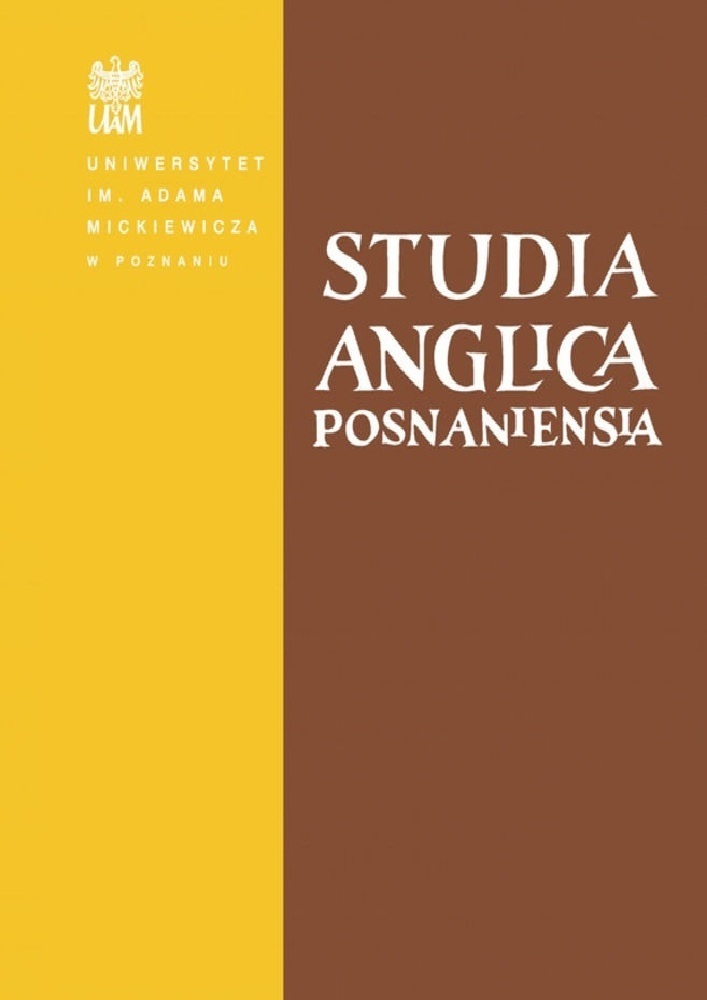Abstract
Proverbs are often said to be part and parcel of the cultural, social, and cognitive heritage of a given linguistic community. This very specific nature of proverbs poses a challenge for any contrastive paremiological study which looks for “equivalents” in the target language. Especially difficult cases which escape systematic analysis are novel modifications of well-established traditional proverbs. To illustrate this, consider a proverb such as The early bird gets the worm. Based on this traditional saying, we have nowadays a number of modifications such as The early bird gets the worm, but the late one gets the pizza or The early bird gets the worm, but the second mouse gets the cheese. Also, a Polish original saying such as Kto rano wstaje, temu Pan Bóg daje, lit. “God provides to those who rise early”, now has a number of variants, including Kto rano wstaje, ten idzie po bułki (lit. “Those who rise early go to a shop to buy rolls”) or Kto rano wstaje, ten jest niewyspany (lit. “Those who rise early are sleepy”). One thing is certain: any attempt to develop a viable contrastive paremiological analysis can hardly ignore the complex and intricate relations between the cognitive, linguistic, and cultural aspects of proverbs compared. What is needed is a multifaceted account of such structures. A translation model which seems to be perfectly suited for this purpose is Lewandowska-Tomaszczyk’s theory of reconceptualization (2010). Using as a point of departure Lewandowska-Tomaszczyk’s assertion that that the translation of a proverb from a source language (SL) to a target language (TL) entails “a number of cycles of reconceptualization of the original SL message, expressed eventually in the TL” (2010: 107), we will offer a re-conceptualization-based account of the shift in meaning involving traditional proverbs and their jocular transformations.
References
Loos, Anita. 1925. Gentlemen prefer blondes. Liveright.
Markiewicz, Henryk & Andrzej Romanowski. 2005. Skrzydlate słowa. Wielki słownik cytatów polskich i obcych [Winged words. Great dictionary of quotations, Polish and otherwise]. Wydawnictwo Literackie.
Paczolay, Gyula. 1997. European proverbs in 55 languages with equivalents in Arabic, Persian, Sanskrit, Chinese and Japanese. Veszprémi Nyomda.
Strauss, Emanuel. 1994. Dictionary of European proverbs. Routledge.
Bassnett, Susan. 2002. Translation studies (3rd edn). Routledge.
Delibegović Džanić, Nihada. 2007. Conceptual Integration Theory – the key for unlocking the internal cognitive choreography of idiom modification. Jezikoslovlje 8(2). 169–191.
Doyle, Charles Clay. 1996. On ‘new’ proverbs and the conservativeness of proverb dictionaries. Proverbium 13. 69–84.
Furiassi, Cristiano, Virginia Pulcini & Félix Rodríguez González (eds.). 2012. The Anglicization of European lexis. John Benjamins.
Jakobson, Roman. 1975 [1959]. Językowe aspekty tłumaczenia [On linguistic aspects of translation]. In Seweryn Pollak (ed.), Przekład artystyczny: O sztuce tłumaczenia księga druga. 109–115 (trans. Zofia Sroczyńska). Zakład Narodowy im. Ossolińskich.
Krzeszowski, Tomasz P. 1997. Angels and devils in hell: Elements of axiology in semantics. Energeia.
Krzeszowski, Tomasz P. 2016. The translation equivalence delusion: Meaning and translation. Peter Lang.
Lakoff, George. 1987. Women, fire, and dangerous things: What categories reveal about the mind. The University of Chicago Press.
Lakoff, George & Mark Johnson. 2003. Metaphors we live by. With a new afterword. University of Chicago Press.
Lefevere, André (ed.). 1992. Translation/history/culture: A sourcebook. Routledge.
Lewandowska-Tomaszczyk, Barbara. 2010. Re-conceptualization and the emergence of discourse meaning as a theory of translation. In Barbara Lewandowska-Tomaszczyk & Marcel Thelen (eds.), Meaning in translation, 105–148. Peter Lang. DOI: 10.13140/2.1.4989.4724.
Lewandowska-Tomaszczyk, Barbara. 2015. Equivalence. In Łukasz Bogucki (ed.), Ways to translation, 11–54. University of Łódź Press.
Lewandowska-Tomaszczyk, Barbara. 2017. Cluster equivalence, General language and Language for Specific Purposes. In Marcin Grygiel (ed.), Cognitive approaches to specialist languages, 384–418. Cambridge Scholars Publishing.
Mandziuk, Justyna. 2016. “A proverb a day keeps boredom away”. Anti-proverbs, twisted proverbs, perverbs and other animals. New Horizons in English Studies 1. 21–30. DOI: 10.17951/nh.2016.1.21
Mieder, Wolfgang. 1993. Proverbs are never out of season: Popular wisdom in the modern age. Oxford University Press.
Mieder, Wolfgang. 2004. Proverbs: A handbook. Greenwood Publishing Group.
Mieder, Wolfgang. 2014. Behold the proverbs of a people: Proverbial wisdom in culture, literature, and politics. University Press of Mississippi.
Mieder, Wolfgang & Anna Tóthné Litovkina. 1999. Twisted wisdom: Modern anti-proverbs. University of Vermont Press.
Nida, Eugene. 1964. Toward a science of translating: With special reference to principles and procedures involved in Bible translating. Brill.
Nida, Eugene. 2000 [1964]. Principles of correspondence. In Lawrence Venuti (ed.), The translation studies reader, 126–140. Routledge.
Nida, Eugene & Charles R. Taber. 1969. The theory and practice of translation. Brill.
Norrick, Neal R. 1985. How proverbs mean: Semantic studies in English proverbs. Mouton.
Phillips, John Bertram & Emile Victor Rieu. 1955. Translating the Gospels: A Discussion Between Dr. E.V. Rieu and the Rev. J. B. Phillips. The Bible Translator 6.4. 150–159.
Syzdykov, Kanat. 2014. Contrastive studies on proverbs. Procedia - Social and Behavioral Sciences 136. 318–321. DOI: 10.1016/j.sbspro.2014.05.336
Tabakowska, Elżbieta. 2016. Co tłumaczy tłumacz? Myśl, język, kultura. Półrocznik Językoznawczy Tertium 1.1–2. 180–191. DOI: 10.7592/Tertium2016.1.2.Tabakowska
Taylor, Archer. 1931. The proverb. Harvard University Press.
Valdeva, Tatiana. 2003. Anti-proverbs or new proverbs: The use of English anti-proverbs and their stylistic analysis. Proverbium 20. 379–390.
Venuti, Lawrence. 2000. Translation, community, utopia. In Lawrence Venuti (eds), The translation studies reader, 468–488. Routledge.
Venuti, Lawrence. 2008. The translator’s invisibility: A history of translation (2nd edn). Routledge.
Whiting, Bartlett Jere. 1931. The origin of the proverb. Harvard University Press.
Whiting, Bartlett Jere. 1994. When evensong and morrowsong accord: Three essays on the proverb (ed. by Joseph Harris). Harvard University Press.
Winick, Stephen. 2013. Proverb is as proverb does: Forrest Gump, the catchphrase, and the proverb. Proverbium 30. 377–428.
Wojtasiewicz, Olgierd. 1957. Wstęp do teorii tłumaczenia [Introduction to the theory of translation]. Zakład im. Ossolińskich.
